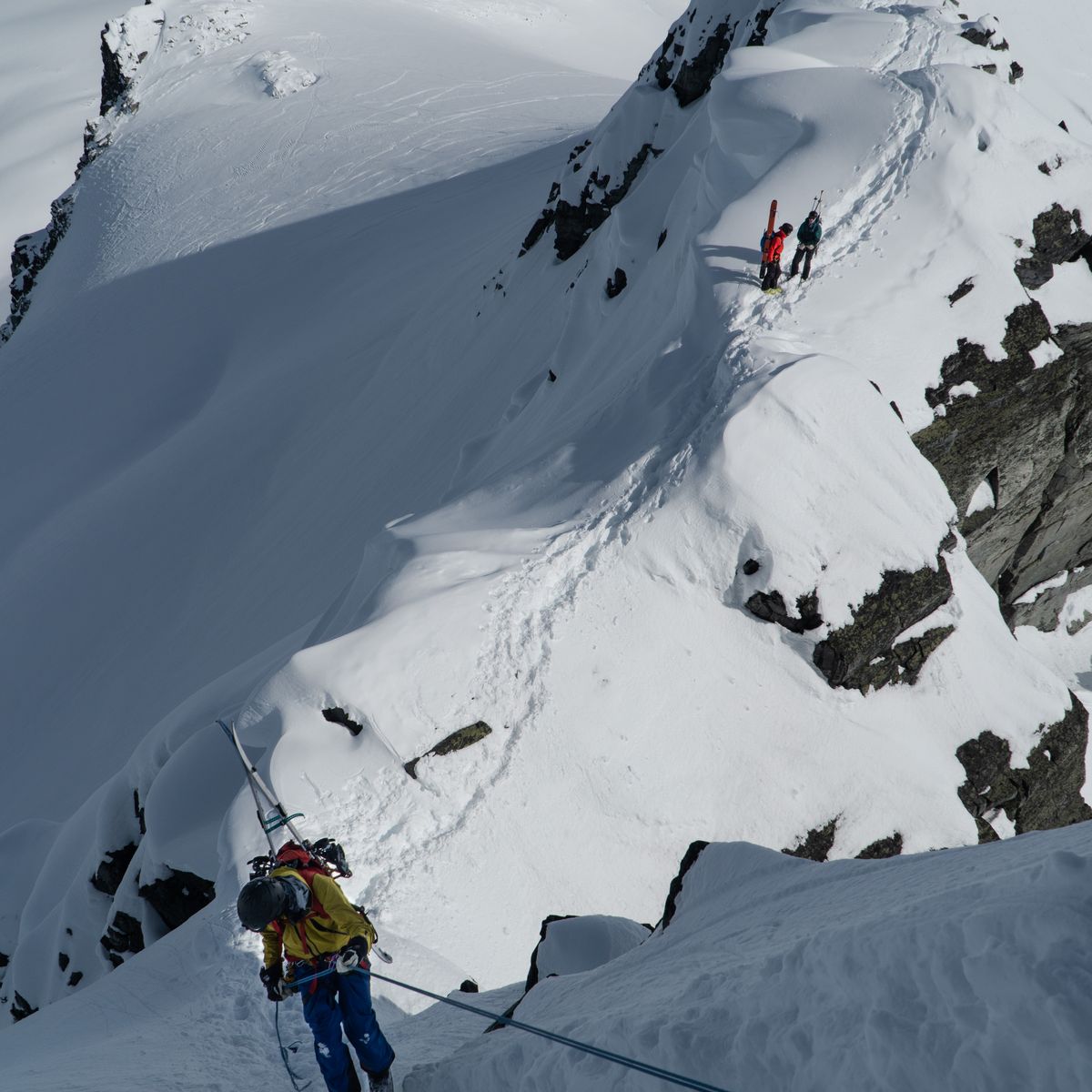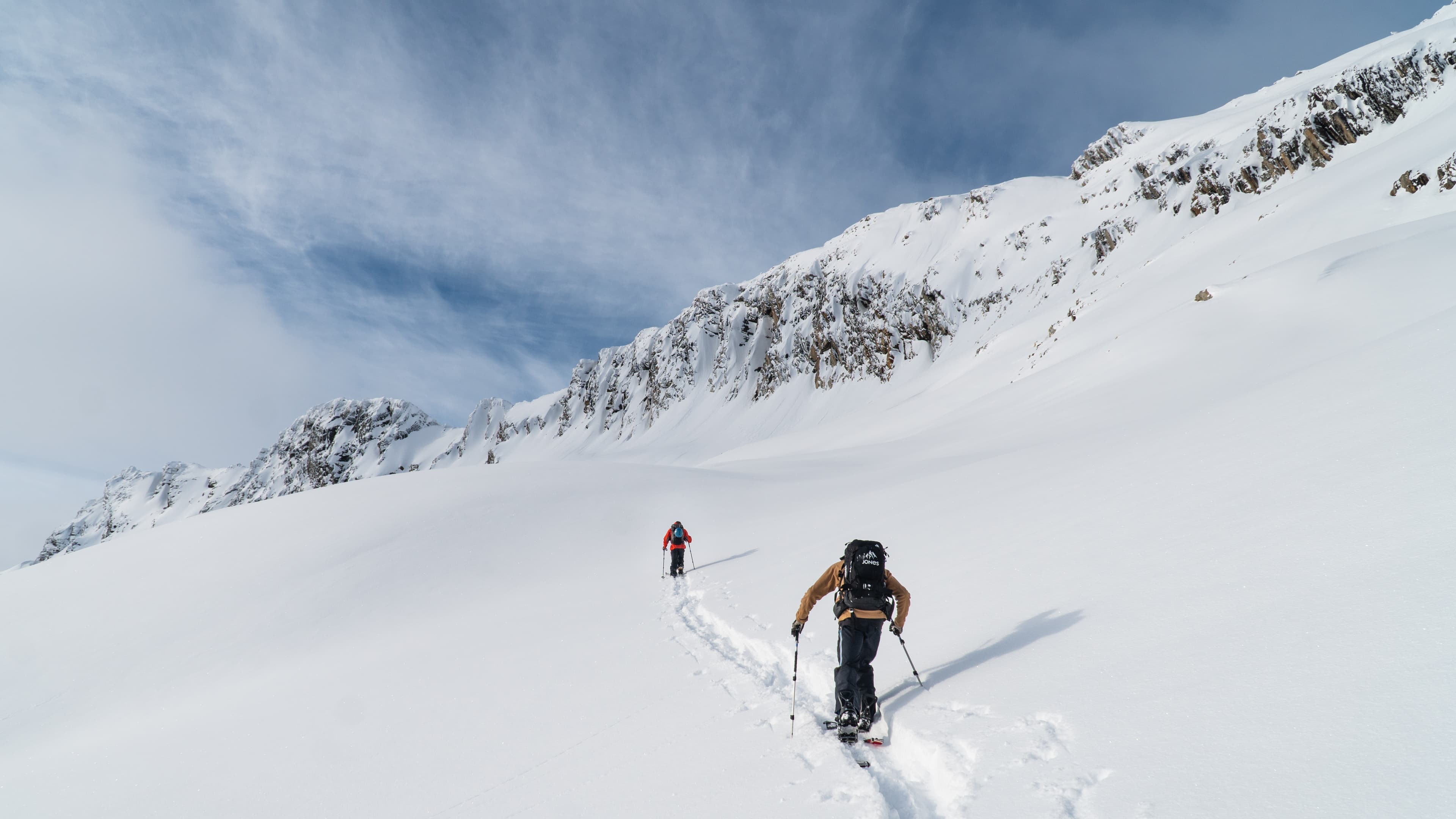The Dos and Don'ts
If you ask a few experienced folks about the dos and don’ts of ski touring and splitboarding, chances are, they’ll have plenty to say - it's a topic that tends to spark some strong opinions. With that in mind, I’ve put together a list of guidelines for respectful and safe travel in the backcountry, whether you're using a pair of skis or a snowboard. It’s not a complete list, but it covers some important basics.
Prepare for everything.
Before heading into the backcountry, take the time to gather all the information you need. There are plenty of excellent online resources that provide daily avalanche forecasts, weather updates, and real-time webcam feeds. These tools, combined with guidebooks, can help you better understand your objective and adapt your plans based on current conditions.
Studying terrain photos, topographic maps, and route descriptions is essential for making informed decisions. If you're heading into the Revelstoke or Rogers Pass area, The Uptrack offers a wealth of local information.
Of course, having the right gear is just as important as having the right information. Always bring your avalanche essentials—transceiver, shovel, and probe—and make a habit of doing a full gear check with your group before leaving home. While the big items are hard to forget, it’s easy to overlook the small stuff like sunglasses, a repair kit, or ski crampons. A quick check can save you a lot of frustration later.

Avoid getting yourself in a sticky situation with the right gear for the job | The Uptrack / https://theuptrack.com/jupiter-traverse-an-exhilarating-ski-mo-epic/
Follow Good Travel Practice.
When it comes to backcountry skiing and splitboarding etiquette, one of the most important principles is sharing our gorgeous playground with others. Respect other groups who are spacing out on both the ascent and descent. They are likely minimizing their exposure to the many hazards out there. Be courteous - wait until your peers are out of harm's way before committing to your line of choice.
Keep communication clear and consistent within your group and with others. Whether you're using radios, hand signals, or just maintaining line of sight, make sure everyone is on the same page throughout the tour.

A group of skiers ascending Little Sifton at Rogers Pass | The Uptrack / https://theuptrack.com/little-sifton-traverse-quality-alpine-stroll/
Share Key Information On The Uptrack.
Sharing information on the uptrack can make a real difference. Always try to pass along any key observations to others on the trail, especially when it comes to avalanche red flags like whumpfing, cracking, or any signs of recent avalanche activity. Also, share notes on snow quality across different aspects and elevations. When done thoughtfully and accurately, this kind of communication helps increase safety in the backcountry.
On the flip side, oversharing is dangerous. For instance, snowpack test results can be misinterpreted by backcountry goers of varying experience levels. Instead, convey your general risk assessment, encouraging other parties to conduct their observations and draw their conclusions.

A group of backcountry skiers discussing ascent options near Cheops Mountain, Glacier National Park | The Uptrack / https://theuptrack.com/niccis-notch-deep-pow-cold-temps/
Respect the mountains.
Leave no trace. Good environmental stewardship is a cornerstone of responsible backcountry skiing and splitboarding. Practicing good environmental stewardship not only protects the places we love but also sets a strong example for others. In many ways, winter makes this a bit easier than summer: snow creates a blank canvas that minimizes impact, if we’re mindful. Avoid cutting branches or trees unless necessary - smart route planning often means you don’t have to.
Always pack out everything you bring in, including those seemingly harmless fruit peels. If nature calls, step well away from the skin track and aim for the trees—let’s just say a little off-trail “irrigation” is far better than leaving surprises where others travel. As for number twos, avoid going in alpine zones, on glaciers, or near treeline. These areas are slow to break down waste. If needed, head lower into the forest where decomposition is much more effective.

Using footbridges and purpose-built trails for the ascent reduce the impact on the surrounding forest | The Uptrack / https://theuptrack.com/forever-young-couloir-skiing-earth-crack/
Respect & Maintain The Uptrack.
Breaking trail after a fresh storm is all part of the backcountry skiing and splitboarding experience - and good etiquette goes a long way. If you see someone in your group (or another group) putting in serious work in deep snow, offer to take a turn at the front. It’s a shared effort, and trading off helps everyone conserve energy. In my view, the person who did the most trail-breaking has earned first tracks on the descent.
Another often overlooked part of good etiquette is taking care of the uptrack. Try to avoid skiing directly over the uptrack, especially on steeper slopes where someone’s put in work to build solid kick-turn platforms. If you notice those well-used corners breaking apart or icing up, give them a quick tune-up. Use your pole baskets, or even your shovel if the snow’s firm, to smooth out the corner. A little bit of maintenance helps keep the trail safer and more enjoyable for everyone.

Hard work pays off on a steep bootpack | The Uptrack / https://theuptrack.com/avalanche-nw-couloir-sustained-steep-skiing/
Follow local rules.
In the Revelstoke area, certain zones come with specific local guidelines that are essential to follow. For example, Parks Canada conducts artillery-based avalanche control to protect the Trans-Canada Highway within the boundaries of Mt Revelstoke and Glacier National Park. To safely manage recreation alongside this operation, Parks Canada has developed the Rogers Pass Winter Permit System, an important tool that provides backcountry skiers and splitboarders access to the park’s legendary terrain. Following this system is mandatory. Ignoring the permit rules can result in steep fines, and more importantly, puts ongoing public access at risk. Parks Canada has the authority to restrict recreational access entirely if safety or compliance becomes an issue.
As always, you'll need a Park Pass to visit any of the Canadian National Parks. If you’re planning to camp in the park during winter, you’ll also need a valid winter backcountry camping permit. Drop by the Rogers Pass Discovery Centre or the Parks Canada Office in Revelstoke. The staff there are friendly and helpful.

The map of the Rogers Pass Winter Permit System | Parks Canada
Never compromise on safety.
Avoid heading into the backcountry alone, even when conditions seem stable. Accidents can happen unexpectedly, whether it’s getting caught in a large avalanche, catching an edge on firm windboard, or hitting buried obstacles. Injuries are a real possibility, and having a group with you is critical if a rescue becomes necessary.
Carry an emergency satellite communication device like the InReach Mini. It's worth noting that newer iPhones now offer basic satellite messaging as well. Whichever tool you use, make sure someone in your group can call for help if needed.
Know your limits—and be honest about them with your group. Encouraging someone to push beyond their capacity can lead to accidents. Fatigue, dehydration, and high-altitude hypoxia often go hand in hand. Staying well-hydrated, eating regularly, and pacing yourself all help maintain both physical performance and clear thinking in the mountains.

Know your limits whether pushing for consequential or mellow objectives | The Uptrack / https://theuptrack.com/ursus-minor-se-couloir-bootpacks-and-backtracks/
The Real Stoke
Fuel Your Fire Within.
Experience #TheRealStoke for yourself.
